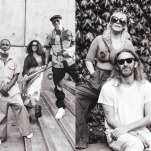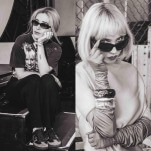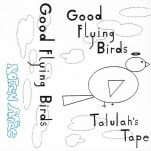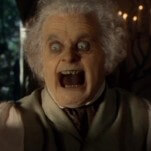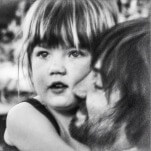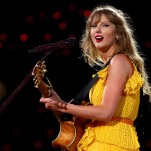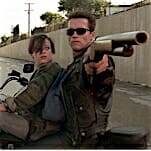D.C. Confronts Street Harassment With Architectural Intervention
Photos by Erik Moe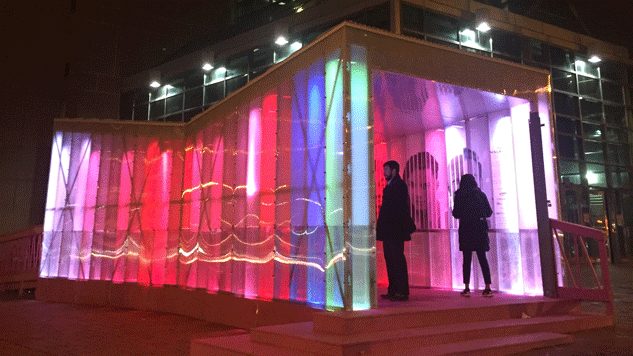
An installation in Washington, D.C. aims to provoke awareness of street harassment using architecture, sound, light, images, and stories. The Walkway was developed by Marshall Moya Design as part of Washington Mayor Muriel Bowser’s ‘Vision Zero’ initiative to eliminate transportation-related fatalities. Exposure to street harassment is a significant factor in how residents choose to navigate the city, with pedestrians and cyclists often making unsafe choices to avoid verbal or physical harassment.
The Walkway activates an often-neglected public plaza at the busy intersection of 14th and U Streets NW. The fluid motion of its magenta and blue exterior lighting draws curiosity-seekers (and their Instagram posts) during the long darkness of winter evenings—no simple task for an outdoor project on a complex social issue when most passers-by are focused on getting inside to warm homes or nightlife destinations.
Once drawn inside the structure, the polished exterior experience gets more complicated. The interior takes the form of a Venturi tunnel—wherein the middle of the structure is tighter and more constricted than the wide, welcoming openings at either end. The designers intended effect is to mimic the sense of tension and claustrophobia we feel as we hurry past a point of confrontation on the sidewalk. The effect is an illustration of how design choices shape our psychological state in ways that are often overlooked. In The Walkway, the effect is subtle, perhaps because there are a lot of other things going on in the space that slow viewers down and shape our engagement with it.

The first thing you notice inside is a series of large black and white faces. These have have been cut in to vertical slices and reconfigured such that identity is blurred across gender, age, race, and culture. Alongside these disorienting faces are stories of sidewalk behavior between strangers—some hostile, some affirming, and some that are more complicated to read in to. By putting these stories alongside faces that are difficult to read, it becomes unclear who is telling the story. We don’t know if we’re reading a male, female, gay or straight voice. We don’t know if we share the same body type, self image, or sense of safety in public as the quote’s speaker.
-

-

-

-

- Curated Home Page Articles By Test Admin October 21, 2025 | 3:10pm
-

- Curated Home Page Articles By Test Admin October 21, 2025 | 2:57pm
- Urls By Test Admin October 21, 2025 | 2:57pm
- Curated Home Page Articles By Test Admin October 21, 2025 | 2:55pm
-

-

-

-

-

-

-

-

-

-

-

-

-

-

-

-

-

-

-

-

-

-

-

-

-

-

-

-

-

-

-










